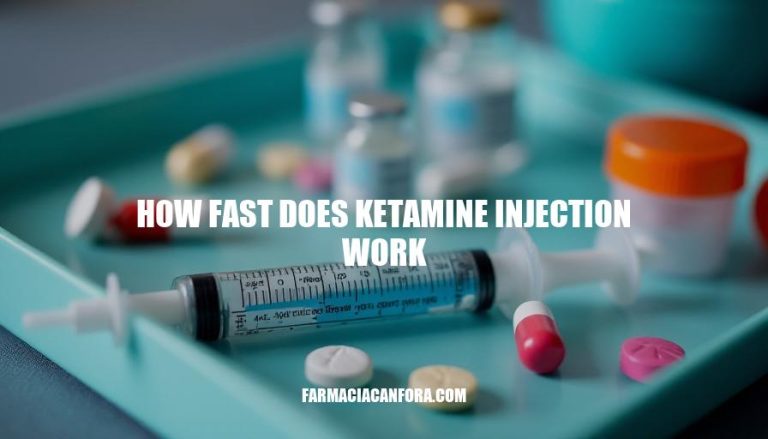


Ketamine injections are known for their rapid onset, typically taking effect within 3 to 4 minutes. This quick action is crucial for both medical and therapeutic applications, such as anesthesia and treatment-resistant depression, where timely intervention can significantly impact patient outcomes. Understanding the onset time helps healthcare providers administer ketamine effectively, ensuring optimal therapeutic benefits and patient safety.
Ketamine injections work rapidly by primarily acting as a non-competitive antagonist of NMDA receptors. By blocking these receptors, ketamine inhibits the action of glutamate, an excitatory neurotransmitter in the brain. This disruption in glutamate transmission leads to a dissociative state, where perception is separated from sensation.
Additionally, ketamine influences other pathways:
The onset of action for ketamine injections is typically within minutes, making it effective for rapid induction of anesthesia and acute management of pain.
Ketamine injections have a rapid onset time. When administered intravenously (IV), the effects are noticeable within 30 seconds. For intramuscular (IM) injections, the onset time is slightly longer, typically 3 to 4 minutes.
Clinical studies and trials have shown that ketamine injections can produce rapid effects:
Depression and Suicidal Ideation: Ketamine has been found to significantly reduce depressive symptoms and suicidal ideation within hours. In a study, participants receiving ketamine showed a reduction in suicidal thoughts within 4 hours, with effects lasting up to 72 hours. Another trial reported that 63% of participants achieved full remission of suicidal ideation by day 3 after ketamine infusion.
Anxiety: Ketamine can relieve anxiety symptoms within 2 hours, compared to the 2-6 weeks typically required for traditional anti-anxiety medications.
Anesthesia: For surgical anesthesia, a dose of 9 to 13 mg/kg of ketamine produces effects within 3 to 4 minutes, lasting 12 to 25 minutes.
These findings highlight ketamine’s potential for rapid therapeutic effects across various conditions.
Here are the key factors that can affect how fast ketamine injection works:
Dosage: Higher doses generally lead to faster onset of effects. However, the exact dose must be carefully calculated to avoid adverse effects.
Administration Method:
Patient-Specific Variables:
These factors collectively influence how quickly ketamine takes effect after injection.
IV and IM injections provide the fastest onset, with IV being slightly quicker. Nasal spray is intermediate, while oral administration is the slowest.
Ketamine injections have a rapid onset time, typically taking effect within 3 to 4 minutes when administered intravenously (IV) and slightly longer with intramuscular (IM) injections.
The effects are noticeable within 30 seconds for IV administration and 1-2 minutes for IM administration.
Clinical studies have shown that ketamine can produce rapid effects in treating depression, anxiety, and anesthesia, with significant reductions in symptoms within hours or days.
Factors affecting the onset time include dosage, administration method, patient-specific variables such as body weight and composition, metabolic rate, age, and health status.
IV injections provide the fastest onset, followed by IM injections, nasal spray, and oral administration.